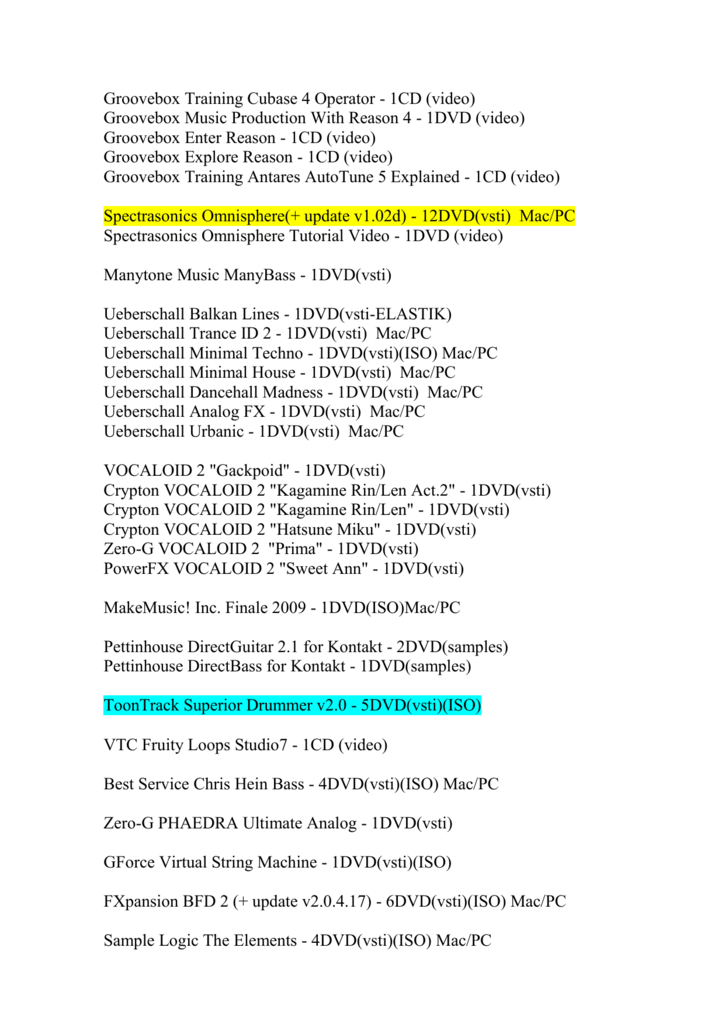

- #Sibelius independence pro vst plugins how to how to#
- #Sibelius independence pro vst plugins how to install#
- #Sibelius independence pro vst plugins how to code#
- #Sibelius independence pro vst plugins how to windows 7#
- #Sibelius independence pro vst plugins how to download#
If you look at that folder in Windows Explorer, you will see a set of subfolders : Accidentals, Analysis, Batch Processing, etc.
#Sibelius independence pro vst plugins how to windows 7#
On a Windows 7 machine, the shipping plug-ins for Sibelius 7.5 in English are typically atĬ:\ProgramData\Avid\Sibelius 7.5\Resources\en.lproj\Plugins\ From here you can drill down to “Contents/Resources/en.lproj/Plugins” To navigate to them, right-click on the Sibelius application choose “Show Package Contents”. On Mac OSX, the shipping plug-ins reside inside the Sibelius Application Package itself. Running Get User Folder Names will avoid some of the folder name confusion it should always get you the correct folder names for your machine, at least in the English version of Sibelius.

The “root” of the folders will be properly translated for other languages, but the words “Plugins”, “House Styles”, “Chord Shapes”, “Manuscript Paper”, “Keyboard Shortcuts”, and “Sibelius Example Scores” will always be shown in English, so you will have to mentally translate that part of the folder name in other languages. The names produced by this plug-in will be correct for English installations of Sibelius. Here are examples this plug-in’s output on a Windows 7 machine and on an OSX machine. Installing and running the downloadable plug-in Get User Folder Names (category Other, Sibelius version 4+) will show you all the user subfolders and the shipping plug-ins folder on your machine. If you need to you can find them in the files created when Sibelius itself is installed, with separate sets for each language that Sibelius supports. You will rarely need to actually access the shipping plug-in folders. Shipping and user plug-ins are stored in separate folders. Plug-ins are text files, with the extension “.plg”. Plug-in files, folders, categories, and menu names If you write your own plug-ins, or get plug-ins from another user, you will need to copy them manually to an appropriate user plug-in subfolder, using the same techniques that were used prior to Sibelius 7.
#Sibelius independence pro vst plugins how to download#
The Sibelius Plug-in installer will only work for plug-ins on the download page.

Plug-ins installed this way can be run immediately, without closing and restarting Sibelius.
#Sibelius independence pro vst plugins how to install#
If you know the name of the plug-in and its category, you can select it from the list of plug-ins and install it. Sibelius 7 provided a plug-in installer for downloadable plug-ins at File >Plug-ins > Install Plug-ins. Once a plug-in is installed, you will need to close and restart Sibelius in order to use the new plug-in. You may find it easier to install plug-ins prior to Sibelius 7 by first installing the Install New Plug-in p lug-in, and running it to install other plugins after you download and unzip plug-in files.
#Sibelius independence pro vst plugins how to how to#
Instructions for finding that folder and for installing plug-ins are in the Need Help article How to install plug-ins on the download page at. Prior to Sibelius 7, you would have to go to the plug-in download page, download and unzip the file for the plug-in you wanted, and copy the unzipped file to an appropriate user plug-in folder. Plug-ins which are downloadable from the Sibelius plug-in download page need to be installed in order to be run. Please treat the plug-ins the same way you would like you have people treat your published music.
#Sibelius independence pro vst plugins how to code#
You may not copy or modify this code without permission. Please note that while it is possible to view plug-in code, this code is not open-source, but is copyrighted by the author unless otherwise specified. In my experience, these plug-ins are reliable and useful. The Sibelius Plug-in Download Page ( ) contains hundreds of plug-ins, written by and donated by Sibelius users, which are available for free.Īny plug-ins on the download page are approved by Avid Sibelius, but as the disclaimer says, Sibelius does not provide support for them, and you use them at your own risk. In addition to the shipping plug-ins, it is possible to write your own plug-ins or download and install plug-ins that other Sibelius users have written.

You can also assign keyboard shortcuts to commonly used plug-ins. You can run plug-ins from the Plug-ins menu in Sibelius 6 and earlier, or from plug-in galleries present in most of the tabs in the Sibelius 7+ Ribbon. In Sibelius 7 and later, several commands on the Ribbon (Home > Bars > Split and Note Input > Arrange >Reduce, for example) are actually plug-ins. Plug-ins can do many of the same things that built-in Sibelius commands do. These plug-ins are documented in the Sibelius Reference. In Sibelius, plug-ins are extra features created using a programming language called ManuScript.


 0 kommentar(er)
0 kommentar(er)
